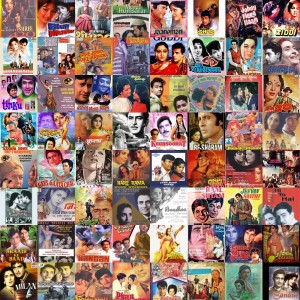By: Summer Yasmin
If Bollywood were to have a single slogan to advertise it, perhaps it would read “50% off Temporary Relief.” As the name suggests, Bollywood has often been viewed as the cheaper, more rudimentary spin off of Hollywood. The world’s largest film producer, based out of India, has not always been taken seriously by international arts and entertainment markets. Bollywood has helped perpetuate stereotypes against itself, by producing laudable mimics of Hollywood movies. Film critics have acknowledged the mainstream Indian film industry in a “laugh at you, not with you” tone. As everything else in India, Bollywood has also struggled with socio economic challenges.
“The Bollywood distribution system is so corrupt that they have trouble making money off movies. So they sell shoes that an actress stepped in. If they turned up the amps some, maybe they could sell the actresses. “- Bruce Sterling.
However, over the past decade attitudes have changed and Bollywood has now become an international phenomenon. This year Bollywood celebrates its 100th birthday. It will be honored at the Cannes film Festival in 2013, for its contribution to film. How and why has Bollywood managed to maintain an enduring presence over the past 100 years despite the international competition and obvious setbacks?
It started during Bollywood’s precarious childhood. At its birth In 1913, Bollywood couldn’t talk; that is to say, the first film it produced was a silent film, Raja Harishchandra. However, the industry learned quickly and switched to sound recording when the market for voice and musicals opened up in India. Growing Into its teens, Bollywood faced unique social, political, cultural and historical challenges. The 1930’s and 40’s were about The Great Depression, WW2, the Indian independence movement and the tempestuous partition of India. It was during these harsh times that a youthful Bollywood adapted to its surroundings and began producing and selling the “escapism” for which it later became famous.
Bollywood commercial cinema finally hit its prime ( a time termed the “Golden Age”) from the 1940’s to 1960’s when it began producing films that earned international acclaim. During this time, India also saw the emergence of a parallel cinema movement. The social realist film Neecha Nagar is rarely remembered today but it won the grand prize at the first Cannes film festival in 1946. The film depicted the differences between rich and poor in Indian society, the remixed version of which can be seen today in the massive hit, Slumdog Millionaire.
From the 1960’s onward Bollywood became the ultimate drama queen, spending most of its time loving and fighting. Dramatic romances and action films became the hallmark of the Industry.
“Indian actors, because of the format of our stories, need to be good actors, and be able to perform emotional sequences, do a bit of comedy, dance and singing, action, because all of this forms just one film. In many ways I’d say there are greater demands on Indian actors than there are on Hollywood.” – Amitabh Bachchan
Bollywood has often been criticized for its exaggerated nature in this regard, however it is this very trait that kept it surviving and thriving. Not only India, but the world in general is a chronic place; with 3 hours of colorful song, dance and drama Bollywood has created its own unique feel good formula that appeals to all facets of a very diverse community, both within India and across the globe. If you need a fast, easy, and relatively cheap way to get a break from life, all you need to do is run away from your problems with Shah Rukh Khan and Kajol. Bollywood films are routinely frequented by every social demographic; from well off Westerners to those living below the poverty line in developing nations. It seems that everyone can find something to relate to in them.
“I would love to work in a Bollywood film, as there is so much drama and color in the films there” – Brad Pitt
This formula has gotten Bollywood where it is today; an entertainment power house with a worldwide presence stretching from Asia, Africa, Europe and North America, with a notable presence in Oceana and even South America. In North America, urban centers like Toronto, Chicago and New York have become a second home to one Bollywood Moghul in particular, Yash Raj Films, a company that has produced and distributed movies that will forever go down in history. It is estimated that Bollywood films in North America are currently earning about 100 million a year through screenings, and sales of video and soundtracks, a fact that has significantly improved the quality of the films themselves. The accompanying soundtracks have formed their own off shoot industry that is also booming in North America and worldwide. Bollywood has brought Indian music to the world and now we see artists like Akon singing Chamak Challo, Lady Gaga releasing Bollywood remixes, Enrique Iglesias singing with Bollywood playback singer, Sunidi Chauhan and Will.i.am collaborating with Bollywood actress turned singer, Priyanka Chopra. Bollywood even made its presence known at the 2012 London Olympics, where famous music composure AR Rahman created a medley for the opening ceremonies.
Bollywood can no longer be written off as Hollywood’s younger, less attractive little sister. Over 100 years it has established its own identity, made memorable contributions to arts and entertainment, all the while carrying through the culture, traditions and flavors of the Indian subcontinent. On its 100 birthday, Bollywood could be called a patriarch of film.
“I think there is an immense charm and humanity about the Bollywood structure, probably in the way there was about Hollywood film in the ’30s and ’40s. Somehow they were less distracted about hardware, and more about production values and people” – Julian Sands






























Comments